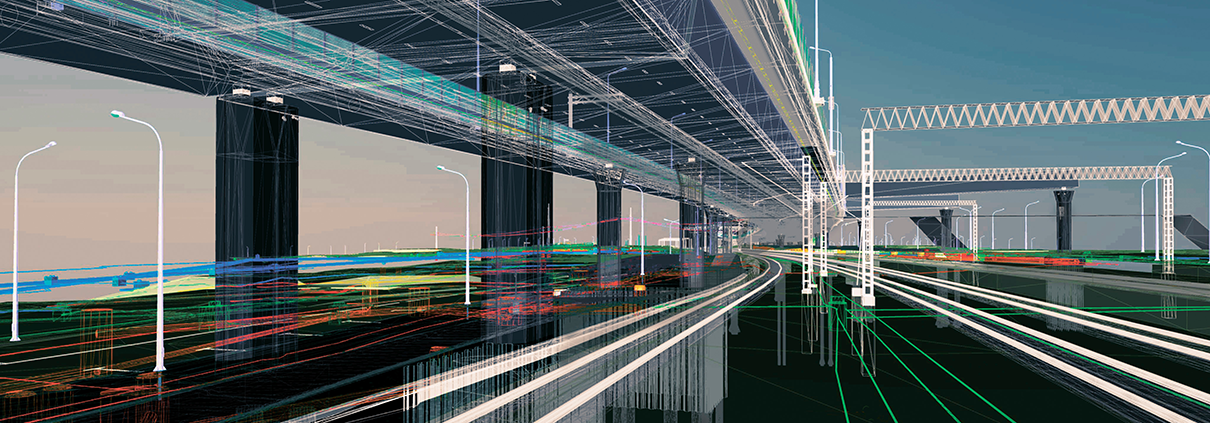The Evolution of Civil Engineering
How BIM is Reshaping the Future
Civil engineering, the backbone of infrastructure development and architectural innovation, is undergoing a monumental transformation. At the heart of this revolution is building information modeling (BIM). This innovation refers to a digital representation of a building’s characteristics, all contained within a single file, allowing for easy sharing and modification by multiple users.
BIM transcends traditional blueprints and drawings, offering a dynamic 3D modeling process that facilitates efficient design, construction, and management of buildings and infrastructure. This technological advancement streamlines workflows and enhances stakeholder collaboration.
As we delve deeper into the 21st century, the impact of BIM on civil engineering is undeniable, reshaping how projects are conceived, executed, and maintained. This article will explore the evolution of civil engineering through the lens of BIM, highlighting its role in driving the future of this ever-evolving field.
The Benefits of BIM in Civil Engineering
BIM has revolutionized the field of construction and civil engineering, introducing efficiencies and capabilities previously unimagined. Here are the key benefits:
Enhanced Collaboration
BIM fosters a highly collaborative environment by allowing team members across disciplines to access, share, and update project data in real-time. This seamless exchange of information leads to better-coordinated projects, reducing the likelihood of errors and discrepancies that can arise from miscommunication.
Improved Efficiency
BIM streamlines the planning and construction processes, significantly reducing the time and resources required to complete projects. Since BIM enables virtual construction and simulation, it allows for the identification and resolution of potential issues before they manifest on-site. As a result, it minimizes delays and cost overruns.
Increased Accuracy
With BIM, civil engineers can generate detailed digital models that accurately represent a project’s physical and functional characteristics. This precision aids in anticipating problems, estimating costs, and assessing project timelines, ensuring higher accuracy throughout the project lifecycle.
Enhanced Sustainability
BIM supports the design of more sustainable and energy-efficient projects by enabling the analysis of a building’s environmental impact from the earliest stages. Engineers can explore various scenarios through simulation tools to find the most sustainable options. The exploration contributes to the development of buildings that are better for the environment.
Superior Risk Management
BIM enables better risk assessment and management by providing a comprehensive view of the project from inception to completion. It helps identify potential safety issues, structural challenges, and other risks, allowing for the implementation of preventative measures that can save time, costs, and potentially lives.
The Impact of BIM on Traditional Engineering Practices
The adoption of BIM represents a paradigm shift in traditional engineering practices, fundamentally altering how projects are conceived, designed, and delivered. This transformation is evident in several key areas:
From Isolation to Integration
Traditionally, engineering projects were characterized by a segmented approach, with architects, engineers, and contractors working in silos. This often led to communication gaps, inconsistencies in project documents, and a reactive approach to problem-solving.
In contrast, BIM promotes an integrated process where all stakeholders access a shared digital representation of the project. The result is enhanced coordination and reduced conflicts and rework.
Precision over Approximation
In the past, engineers relied heavily on approximations and 2D drawings to plan and visualize projects. This approach, while practical, was prone to errors and limitations in understanding complex structures. BIM transforms this dynamic by offering precise, 3D digital models that accurately simulate a project’s physical and functional characteristics.
Proactive Problem-Solving
Traditional engineering practices often involved a “build first, correct later” mentality, where issues were addressed as they arose during construction. BIM shifts this paradigm to a proactive one, enabling the identification and resolution of potential design and construction issues through virtual simulations before physical work begins.
Enhanced Project Lifecycle Management
Historically, engineering projects focused primarily on design and construction, with less emphasis on the operational phase. BIM extends its utility beyond completion, providing a comprehensive toolset for facility management and maintenance.
Sustainable Development
Sustainability was often a secondary consideration in traditional engineering, primarily due to the limitations in assessing environmental impacts during the planning stages. BIM facilitates the integration of sustainable design principles from the outset, enabling engineers to analyze energy efficiency, material sustainability, and environmental impact.
BIM’s Role in Improving Construction Efficiency
BIM enhances construction efficiency by streamlining operations, reducing waste, and ensuring projects are completed on time and within budget. Here’s how BIM achieves this:
Streamlined Project Management
BIM centralizes project information into a single, shared model, dramatically improving stakeholder communication and collaboration. This integration ensures that everyone can access up-to-date information, facilitating quicker decision-making and minimizing the risk of costly errors and rework.
Enhanced Coordination and Clash Detection
Through detailed 3D models, BIM enables the early detection of potential clashes between architectural, structural, and MEP (mechanical, electrical, and plumbing) components. Identifying and resolving these conflicts before construction begins reduces delays, ensuring a smoother, faster construction process.
Accurate Cost Estimation
BIM provides precise, real-time cost estimations by automatically updating materials, labor, and other costs as the design evolves. This capability allows for more accurate budgeting and financial planning, reducing the likelihood of overspending and ensuring projects stay on track financially.
Improved Scheduling
BIM enhances construction scheduling by allowing for the simulation of construction sequences, identifying the most efficient workflows, and optimizing the allocation of resources. This planning precision ensures that projects are completed on time, if not ahead of schedule, by minimizing downtime and maximizing productivity.
Waste Reduction
By enabling detailed simulations and analyses, BIM supports the design of more sustainable buildings and the optimization of material usage. This approach contributes to environmental sustainability and reduces waste on construction sites, further enhancing efficiency and cost-effectiveness.
Unlocking Innovation: BIM’s Influence on Design Processes
BIM has fundamentally transformed the design processes in construction, acting as a catalyst for innovation and creativity. Here’s a concise exploration of how BIM influences design:
Facilitating Complex Designs
BIM enables architects and engineers to push the boundaries of traditional design, allowing for the creation of more complex and intricate structures. BIM’s detailed 3D modeling capabilities provide a clear visualization of how design elements interact, promoting creative solutions.
Enhancing Design Decision-Making
With BIM, design decisions are informed by a wealth of data, including material properties, spatial relationships, and environmental impacts. This rich information base allows designers to explore various scenarios and make informed choices early in the design process, ensuring optimal functionality and aesthetics.
Increasing Design Accuracy
BIM’s precise modeling tools reduce the margin for error in the design phase. By accurately simulating the physical characteristics of materials and their interactions, BIM ensures that designs are both aesthetically pleasing and structurally sound.
Streamlining Revisions
Design is an iterative process, and BIM streamlines revisions. Changes made in the model are automatically updated across all project documents, reducing manual errors and saving time. This efficiency accelerates the design phase and allows for greater experimentation and refinement.
The Bottom Line
BIM represents a monumental shift in the landscape of civil engineering and construction. It is redefining traditional practices and ushering in an era of enhanced efficiency, collaboration, and innovation across all project phases. From streamlining project management and improving construction efficiency to influencing design processes and promoting sustainability, BIM’s impact is profound and multifaceted.
Its influence extends beyond mere technological advancement, fostering a culture of integrated, data-driven decision-making and creative problem-solving. As BIM continues to evolve, its role in driving the future of construction and design is undeniable, promising a new era of smarter, more sustainable, and innovative built environments.





















